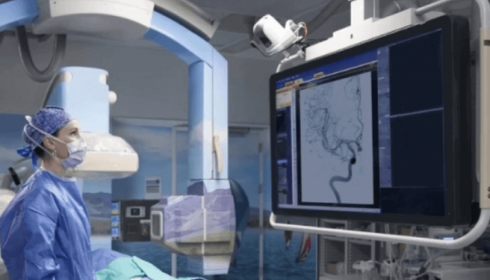In today’s fast-paced healthcare environment, the need for quick, accurate, and accessible diagnostic services is more critical than ever. Teleradiology services have emerged as a game-changing solution, allowing radiological images to be transmitted from one location to another for interpretation and consultation. This innovative approach is not only bridging the gap between patients and expert radiologists but is also ensuring faster and more efficient patient care.
What is Teleradiology?
Teleradiology is the practice of transmitting radiological images, such as X-rays, CT scans, MRIs, and ultrasounds, to radiologists who are located remotely. This allows hospitals, clinics, and imaging centers to have access to specialized radiology expertise 24/7, regardless of geographical limitations.
With the growing demand for specialized imaging services, teleradiology has become a crucial part of modern healthcare. It enhances the ability of healthcare providers to deliver timely diagnoses, especially in emergency situations where every second counts.
How Teleradiology Services Work
Teleradiology operates by using secure, high-speed internet connections to transfer medical images from the point of origin to the reporting radiologist. Here’s a step-by-step overview of the process:
- Medical imaging is performed at the hospital or diagnostic center.
- The images are digitized and securely sent to a teleradiologist via encrypted networks.
- The radiologist reviews the images and prepares a detailed report.
- The report is electronically transmitted back to the referring physician for further patient management.
This seamless process ensures that critical imaging results are available quickly, improving patient outcomes.
Benefits of Teleradiology Services
Teleradiology offers several benefits that make it an indispensable tool for healthcare providers:
- 24/7 Access to Radiology Experts: Teleradiology enables around-the-clock access to specialized radiologists, ensuring that urgent cases can be addressed without delay.
- Improved Turnaround Times: By eliminating the need to wait for on-site radiologists, teleradiology significantly reduces reporting times.
- Cost-Effective: Smaller hospitals and rural clinics can save on staffing costs by outsourcing radiology services instead of hiring full-time, on-site radiologists.
- Enhanced Collaboration: Physicians can consult with subspecialty radiologists who have expertise in specific imaging modalities, leading to more accurate diagnoses.
- Better Patient Care: Fast and reliable imaging reports help clinicians make timely decisions, which can be life-saving in critical cases.
Applications of Teleradiology
Teleradiology services are widely used in various healthcare settings, including:
- Emergency Departments: For rapid assessment of trauma cases and acute conditions.
- Night Coverage: To provide radiology support during overnight hours when on-site radiologists may not be available.
- Subspecialty Consultations: For complex cases that require input from specialized radiologists, such as neuroradiologists or musculoskeletal imaging experts.
- Rural and Underserved Areas: To deliver high-quality diagnostic services where local radiology resources are limited.
Challenges in Teleradiology
Despite its numerous advantages, teleradiology does face some challenges:
- Data Security: Protecting patient information is paramount. Secure data encryption and compliance with healthcare regulations like HIPAA are essential.
- Licensing and Accreditation: Radiologists must hold licenses in the states or countries where the imaging is performed, which can complicate cross-border services.
- Image Quality: High-quality image transmission is vital to ensure accurate interpretations, and this depends on reliable internet infrastructure.
Future of Teleradiology
The future of teleradiology looks promising, with advancements in artificial intelligence (AI) set to further enhance the accuracy and efficiency of diagnostic imaging. AI algorithms can assist radiologists by quickly flagging abnormal findings, improving workflow, and reducing human error.
Additionally, as telemedicine continues to grow, teleradiology will become even more integrated into comprehensive remote healthcare solutions, providing faster, safer, and more accessible diagnostic services to patients worldwide.
Conclusion
Teleradiology services are transforming the delivery of radiology by overcoming geographical barriers and improving response times. With its ability to connect medical facilities with skilled radiologists anywhere in the world, teleradiology services are playing a pivotal role in enhancing patient care, reducing costs, and supporting the growing demand for specialized medical imaging. As technology advances, the reach and capabilities of teleradiology will only continue to expand, making it an essential component of modern healthcare systems.

